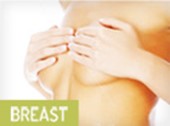Cosmetic Breast Surgery - Gynaecomastia (male breast enlargement)
Initial Consultation
At your first visit, your suitability for the procedure and your fitness for surgery will be assessed. Your breasts will be examined. It is important to decide what is the cause for the gynaecomastia – usually hormonal alterations in puberty or middle age. Occasionally medication may cause it, and need to be changed. Rarely testicular tumours (different sized testes with a lump in one) or brain growths (visual disturbances) or other pathology can lead to hormonal changes and I may request blood or other tests to find help out the reason for your breast enlargement.
An operation plan will be made and an explanation given on anticipated recovery time and use of chest supportive garments.
You should be aware of the risks and complications. All your questions should be answered. A well-prepared patient will do better with surgery and will be more satisfied with the final result.
Surgery
My usual method of gynaecomastia correction is described below. I will vary this surgery according to patient's individual requirements, but I find the method below provides me with excellent results in the majority of patients.
Surgery is usually performed under general anaesthetic. Either day case surgery or a one-night hospital stay is needed. On arrival on the morning of surgery, you will meet the anaesthetist who will explain the anaesthetic and risks. I will mark the incision lines and various other landmarks on your skin with a pen. I will also take pre-operative photographs at this stage.
After you are under anaesthetic, fluid is injected into the skin to give good pain relief – the fluid contains a local anaesthetic and vasoconstrictor to stop bleeding. The incisions for liposuction are usually 3 small (5mm) cuts around the breast mound. Then the fat is sucked out with a small blunt tipped cannula. If an open approach is required, then it will usually follow the edge of the nipple to hide the scar as best as possible. The firmer glandular tissue is removed through this cut. Sometimes the incision goes all round the nipple, and sometimes only part of the way around. Rarely the cut will need to extend onto the chest – if the breasts are very big. The surgery takes approximately one and a half hours. The wounds are closed with dissolvable stitches and covered with waterproof dressings to allow you to shower regularly. After surgery, you will be transferred to the recovery area and then back to the ward. You will have an elasticized support garment placed around your chest. This will need to be worn for 6-weeks continuously.
Post-Operatively
When you awake from surgery in the recovery area, you should be relatively pain free. As the local anaesthetic wears off, you may feel a little sore, but painkiller medication will be prescribed. On the first postoperative day you should be up and about, and shower. Your breasts will be a little swollen and bruised. Most of the swelling and bruising takes about 3-weeks to settle. However there still is some firmness and a little swelling that slowly improves over the next 12-months. It is only after a year that the final result is evident.
I will see you about 1-week post-operatively for your first visit. Following this, you should slowly get back to normal domestic activity. Massaging the scars with an aqueous cream helps them to settle, and should begin gently after the first dressing change. Firmer massage can start after 3-weeks.
Some numbness in the breast and particularly the nipple may be noticed for the first few months after surgery. Hypersensitivity can also occur. Both are usually transient.
With regards to driving, I usually advise a period of 1-week with no driving but again this is very personal and some people recover very quickly and can get back to driving in a short time. You should be able to return to work within a week to two, depending on the level of activity required by your job. Physical exercise can be begun when you feel ready, generally after 4-weeks.
Risks and complications
Gynaecomastia correction is a relatively straightforward procedure. As with any surgery, however, there are certain risks and complications. It is important to understand what these are.
- Bleeding (1-5%)
As with any surgical procedure, excessive bleeding following the operation may cause some swelling and pain. If excessive bleeding occurs, another operation may be needed to control the bleeding and remove the accumulated blood. - Infection (under 2%)
A small percentage of patients develop an infection. This is most often seen within a week after surgery. A postoperative temperature and local redness, warmth and pain of the breast are signs that may indicate the beginning of an infection. This can be controlled with the use of antibiotics, but in some cases further surgery is needed to drain some pus. - Sensory changes (frequent – transient usually)
Some men report sensory changes: their nipples become oversensitive, under-sensitive, or even numb. You may also notice small patches of numbness near the incisions. These symptoms usually disappear with time, but may be permanent in a few patients. - Asymmetry (mild – frequent)
Mild differences in the shape of your chest exist prior to surgery (the dominant hand has stronger, bigger chest muscles and there may be differences in the size of each breast too). Every attempt is made to make each breast the same size/shape, but small differences will exist. It is important to recognize that these often were present prior to any operation. - Revisional surgery
In the unlikely event that you are unhappy with your appearance, this may be necessary. It is always easier to remove a bit more tissue than put some back, and for this reason I am always conservative with how much tissue I remove.
Checklist
- Make sure I know all the medication you are on before surgery.
- Do not take any aspirin or blood thinning drugs for at least 2-weeks prior to surgery. Paracetamol is safe. Smoking must be stopped at least 1-week prior to surgery and afterwards until your wounds have healed.
- Arnica is the only homeopathic medicine I would recommend before surgery.
- Nothing to eat or drink after midnight the night before your operation.
If you are worried post-operatively
- Telephone the ward of the hospital from which you have been discharged.
- Telephone my secretary during office hours – 07780 785186.
- In an emergency (and you have failed to contact me by the above two methods) then please telephone St George’s Hospital (020 8672 1255) and ask them to page the Plastic Surgery junior doctor on call (bleep 7050).








